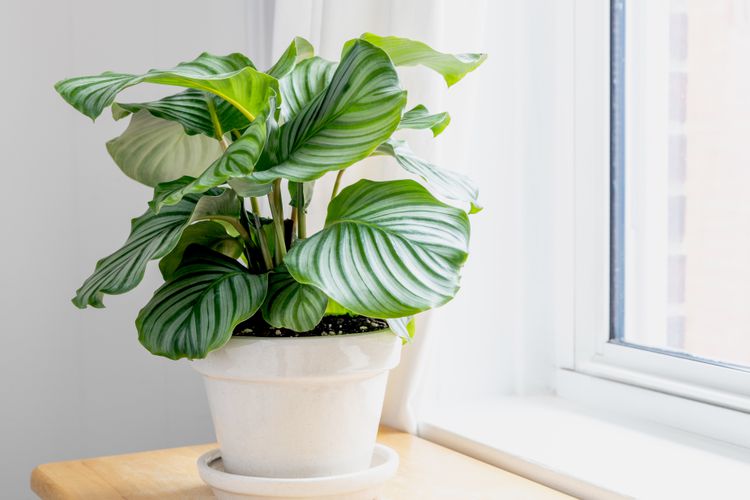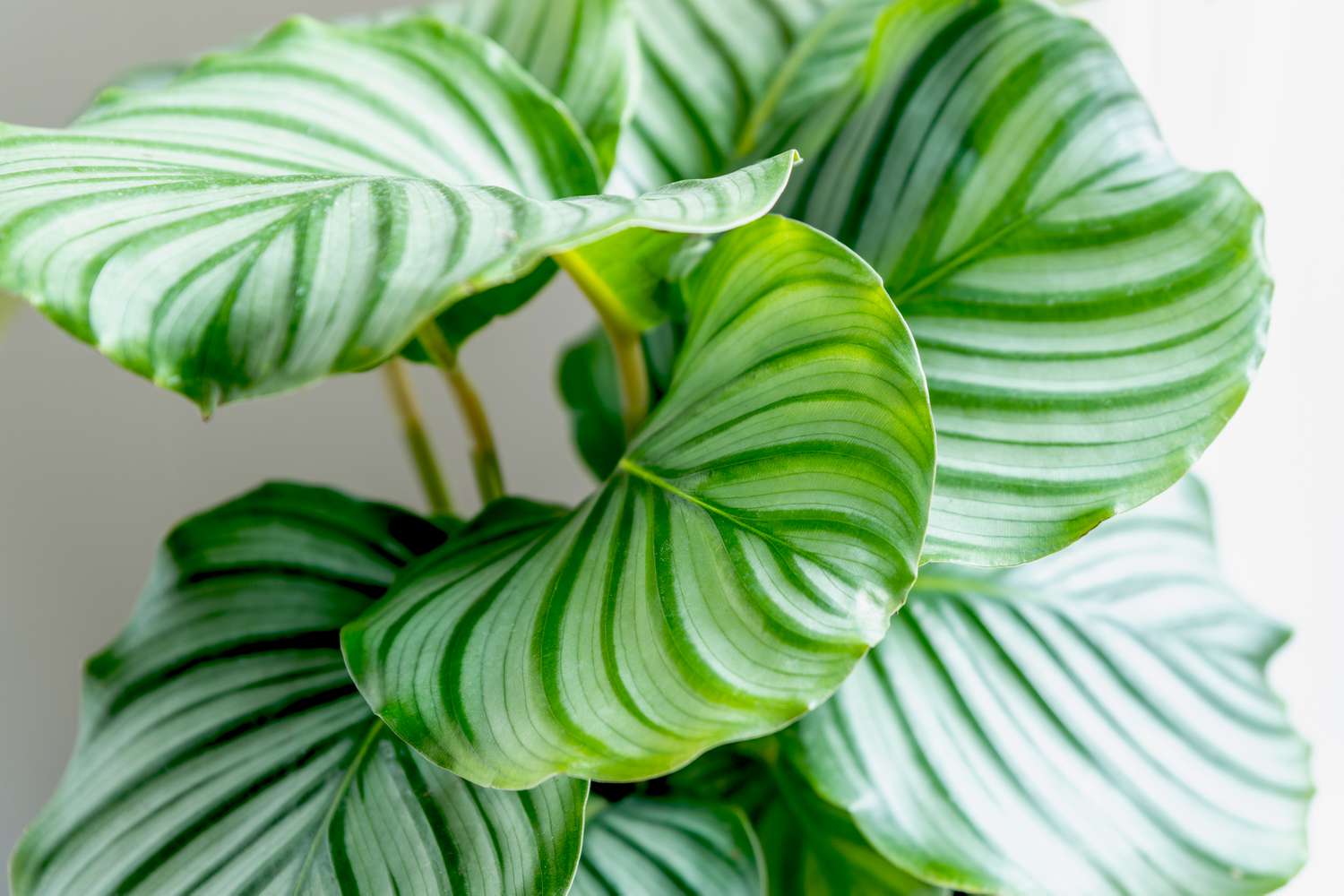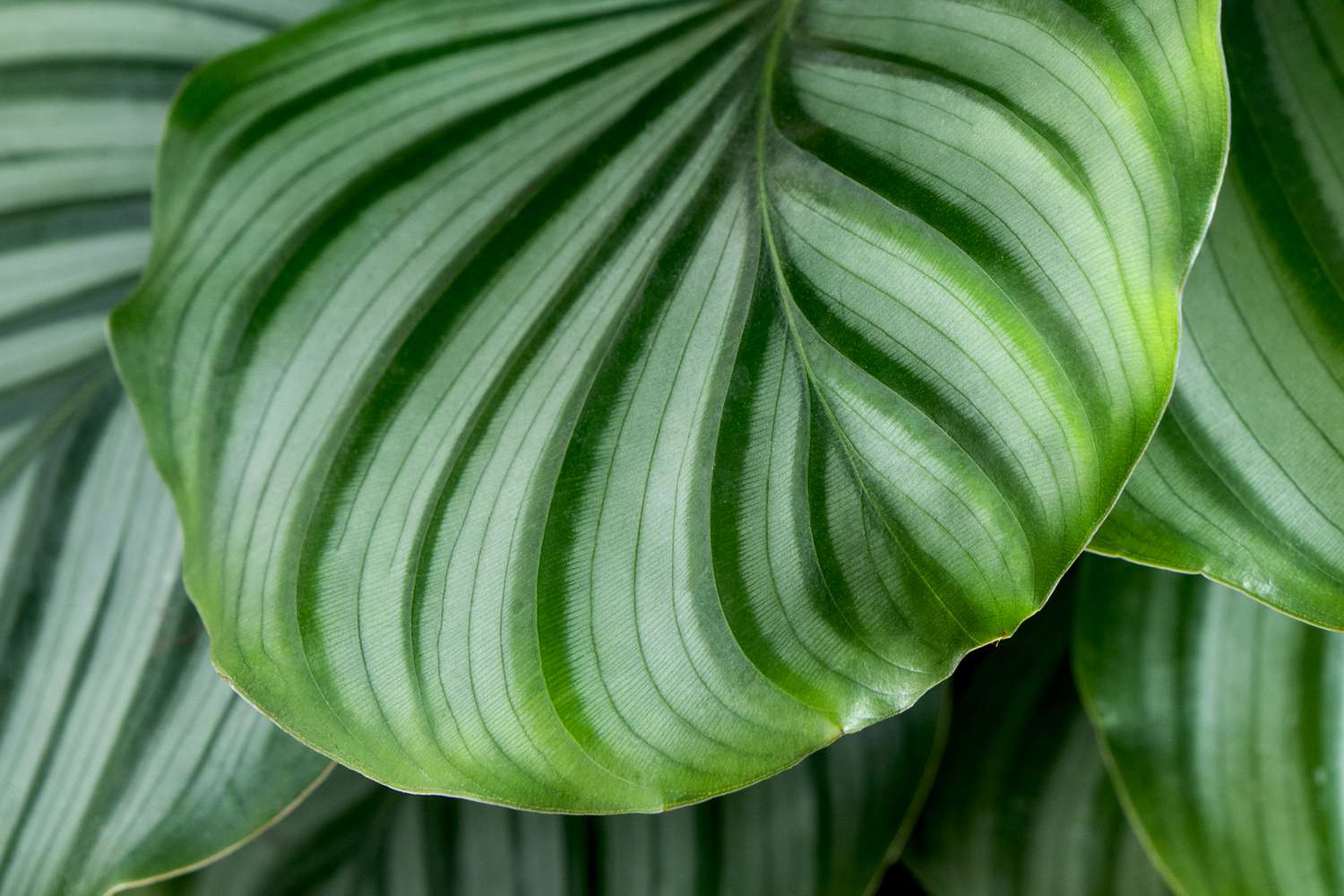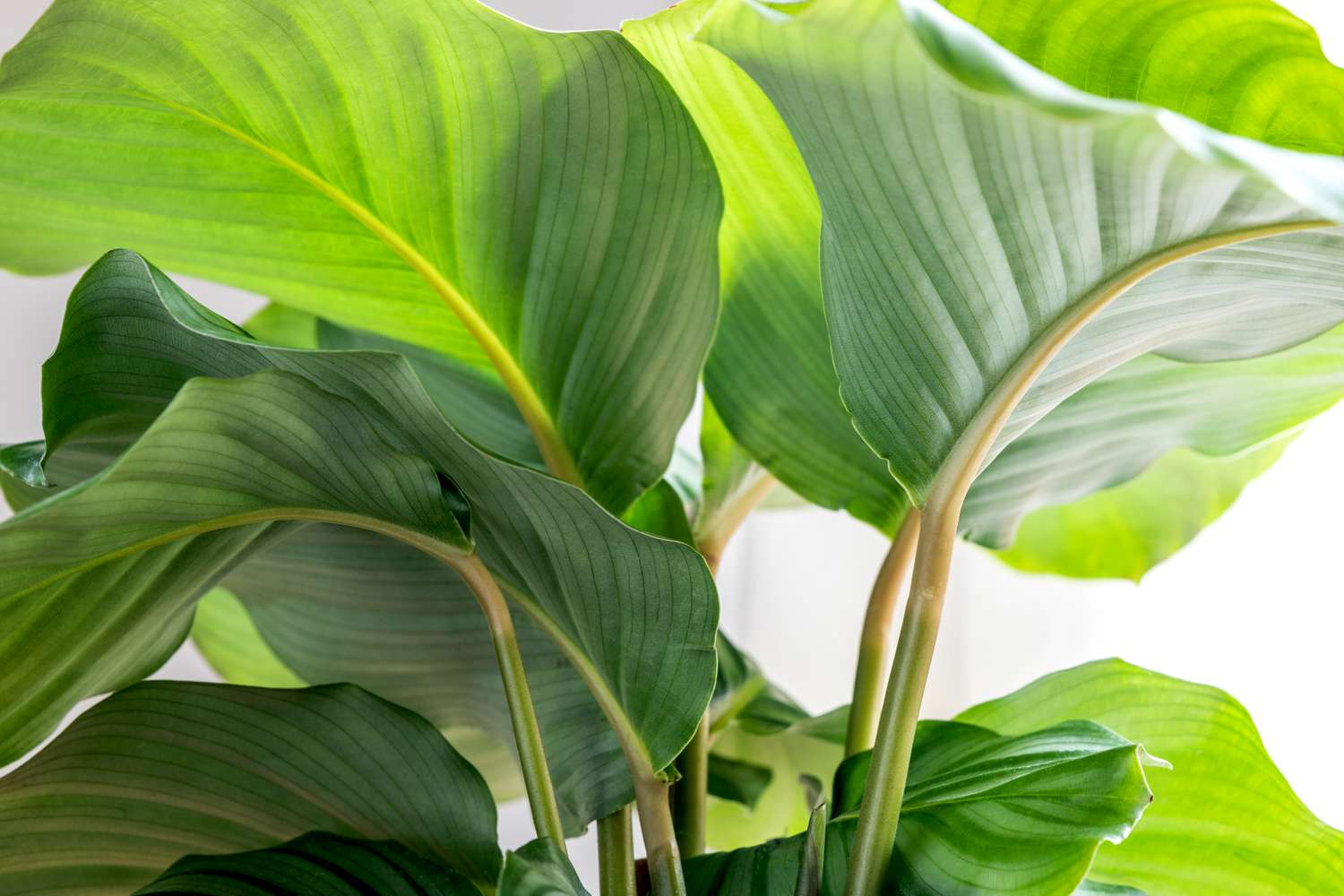Contents
- Light
- Soil
- Water
- Heat and Moisture Levels
- Fertilizer
- Pruning
- Propagating Calathea Orbifolia can be achieved through various methods.
- Transplanting and Replanting Calathea Orbifolia
- Frequent Pests
- Frequent Issues Encountered with Calathea Orbifolia
- Yellowing Leaves
- Curled Edges and Brownish Tips
- Wilting or Shedding Leaves
This specific plant can be challenging for novices, but the effort is definitely rewarding.

The round-leaved calathea, scientifically known as Geoppertia orbifolia, is commonly known by its former name, calathea orbifolia. Its large, lush leaves adorned with striking silver-green stripes create a dramatic visual impact, but this plant tends to be a bit particular and requires considerable care.
This intriguing plant offers numerous benefits for those ready to invest a little extra time. Calathea orbifolia is a rapidly growing, pet-safe, vibrant, and visually striking choice.



Light
Promoting vibrant, healthy leaves in a calathea orbifolia hinges on providing the appropriate diffused light, which is essential for thriving growth.
Exposure to direct sunlight can lead to unsightly brown patches, leaf scorch, and a loss of vibrant patterns. Conversely, insufficient light can prevent the leaves from appearing lush and healthy. To encourage even growth, it’s beneficial to rotate the plant on a monthly basis.
Soil
Calathea orbifolia features delicate, small roots, making it essential to use a light, airy potting mix. Since these plants thrive on moisture, it’s important to choose a mix that retains water effectively.
Blends formulated for African violets are effective. If you prefer to create your own, choose a mix that is mildly acidic. A good combination would be one part peat moss (or, for a more eco-friendly option, coconut coir), one part perlite, and one part vermiculite.
Ensure that the pot is equipped with sufficient drainage holes. Although Calathea orbifolia prefers to remain consistently moist, excessive water can lead to root rot.
Water
Mistakes in watering are a common issue for many new owners of round-leaved calathea. Achieving the right balance can be challenging, as overwatering can result in root rot and ultimately the demise of your plant.
Regularly inspect the upper few inches of the soil using your finger. If it feels moist and soil adheres to your finger, hold off on watering for a few days and reassess. If the soil feels dry, it’s generally a sign that it’s time to water. If you’re uncertain, consider using a moisture meter.
These plants require regular moisture but cannot withstand overly wet roots. A method of watering frequently but in small amounts is most effective, and bottom watering ensures that moisture penetrates to the roots and the core of the pot.
Watering from above frequently causes the water to flow straight to the bottom. After a few hours, it’s important to inspect the soil. If it’s damp all the way to the surface, be sure to remove any surplus water from the saucer or tray beneath the pot.
Utilizing distilled, filtered, or tap water that has been allowed to sit overnight can help avoid the browning edges or yellowing of leaves, which can result from certain troublesome minerals.
Heat and Moisture Levels
These plants are sensitive to cold conditions, drafts, and extreme heating or air conditioning. They thrive in stable warmth and humidity. Temperatures dropping below 60 degrees can cause issues. It’s best to keep indoor temperatures within the range of 65 to 75 degrees.
Round-leaved calathea thrive in bright, warm bathrooms. To maintain their health, humidity should be kept above 50 percent, with 60 percent being ideal for optimal growth.
If your home lacks sufficient humidity, think about utilizing a humidifier, positioning your plant within a spacious terrarium or beneath a glass dome, or setting a tray filled with pebbles and water beneath your plant. Additionally, frequent misting can also enhance humidity levels.
Fertilizer
Using a mild nitrogen-rich fertilizer approximately once a month throughout the growing season can encourage vibrant and healthy leaves. However, it’s important to avoid excessive application, as overly strong fertilizer can damage the foliage.
Pruning
Calathea orbifolia requires minimal pruning. Simply trim away any dead or dying leaves by cutting the stems to about an inch above the soil. This practice encourages the plant to focus its energy on producing new, healthy growth.
Always utilize sanitized pruning shears or scissors to minimize the chance of spreading fungal infections.
Propagating Calathea Orbifolia can be achieved through various methods.
Propagating calathea orbifolia can be difficult, yet it is achievable. This process involves dividing the roots, so it is essential to start with a robust, mature plant.
To achieve optimal outcomes, think about propagating your plant while you are repotting it. If you can, aim for late spring or early summer for propagation, as this is when temperatures are highest and growth is at its peak.
Here’s a guide on how to propagate your calathea with round leaves.
- Carefully take the plant out of the container.
- Typically, you’ll notice small offsets emerging from the side of the parent plant. These are the ones you should detach, ensuring you retain a tuber root and a single leaf. Carefully separate the roots, taking care not to damage them.
- Make sure to promptly place the separated baby section into a loose, well-draining, sterile potting mix. It’s important not to leave the fragile roots exposed for an extended period.
- Maintain the new plant in a state of consistent moisture without allowing it to become waterlogged.
- Seal the section with a zip-lock plastic bag for several weeks to maintain humidity and moisture levels.
- Approximately three weeks later, you can take off the bag when you observe new growth.
Transplanting and Replanting Calathea Orbifolia
If you notice roots emerging from the drainage holes of the pot, it indicates that it’s time to consider repotting. Calathea orbifolia is sensitive to disturbances of its fragile roots, so it’s best to repot only when absolutely necessary, and to handle the plant carefully to reduce the risk of transplant shock.
Choose a pot that is approximately two to three inches bigger than the original one. There’s no need to remove all the old soil from the rootball. It’s preferable to add new soil around the existing potting mix that is already attached to the rootball rather than attempting to remove it entirely.
Frequent Pests
Spider mites are attracted to the leaves of calathea orbifolia. They thrive in environments with low humidity, so if you notice these pests, it may indicate that your plant requires a more humid atmosphere.
Frequent Issues Encountered with Calathea Orbifolia
Given the demanding nature of the round-leaved calathea, it may encounter several problems if it doesn’t receive proper care and attention. Here are some key issues to watch for:
Yellowing Leaves
Excessive watering is a frequent issue for the calathea orbifolia, and a clear indication of this error is the beautiful leaves beginning to yellow.
Curled Edges and Brownish Tips
Insufficient watering or low humidity can cause the leaves of your calathea orbifolia to curl and the tips to become brown. It’s important to note, though, that older leaves may naturally exhibit some browning at the tips, so this isn’t necessarily a cause for concern.
These signs may indicate that your plant is receiving excessive direct sunlight. To avoid sunburn, choose a location that offers filtered light instead of direct exposure.
Wilting or Shedding Leaves
It’s not uncommon for even the healthiest round-leaved calathea to experience some leaf drooping during the day. If the leaves regain their upright position at night, there’s generally no cause for concern. On the other hand, if the drooping or leaf loss continues, it may indicate that your plant requires additional water and humidity.
What is the growth rate of calathea orbifolia plants?
These plants tend to grow quickly. Given optimal conditions, they can exceed two feet in height, and their leaves can expand to nearly one foot in just a year or two.
What other plants resemble calathea orbifolia?
If you’re looking for a tropical houseplant that resembles others but is somewhat simpler to maintain, consider the Ctenanthe setosa ‘Gray Star.’ Its distinctive silver-gray leaf pattern adds a unique touch. While it still requires some care, it is less demanding compared to the calathea.
Is it possible to cultivate Calathea orbifolia outside?
These plants are authentic tropical varieties and are restricted to specific USDA hardiness zones for outdoor cultivation. Nevertheless, if you reside in areas such as Florida or Hawaii, where you can ensure consistent warmth and elevated humidity throughout the year, you can certainly consider showcasing the round-leaved calathea in your garden.


 Tips for Cultivating and Maintaining Haworthia Cooperi Plant
Tips for Cultivating and Maintaining Haworthia Cooperi Plant Tips for Cultivating and Maintaining Peperomia Orba (Peperomia Pixie Lime)
Tips for Cultivating and Maintaining Peperomia Orba (Peperomia Pixie Lime) What is Micro Clover? Benefits of Incorporating It into Your Lawn
What is Micro Clover? Benefits of Incorporating It into Your Lawn